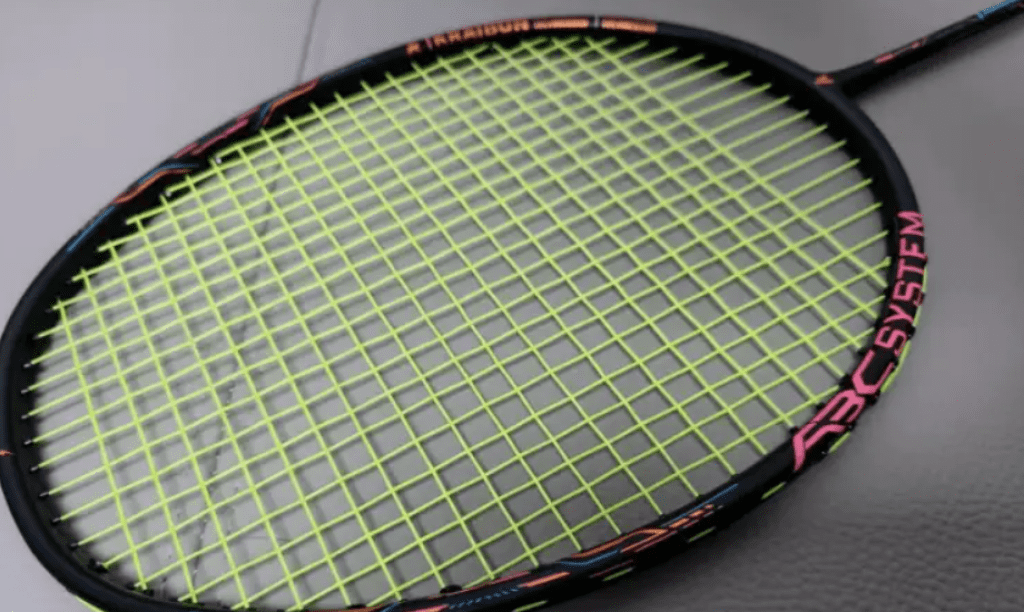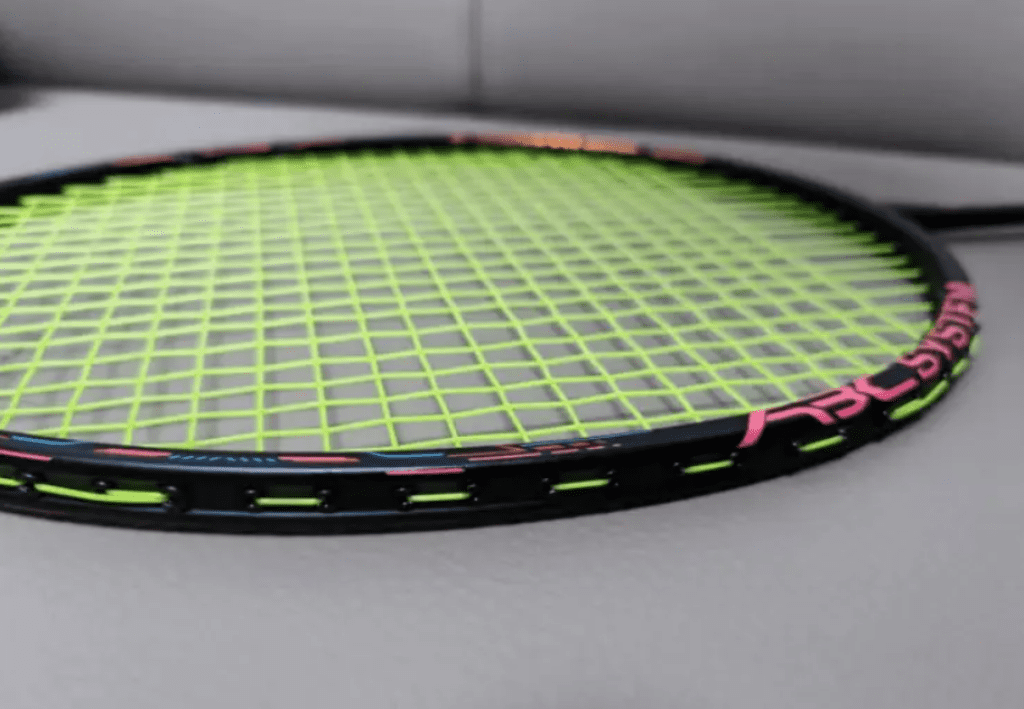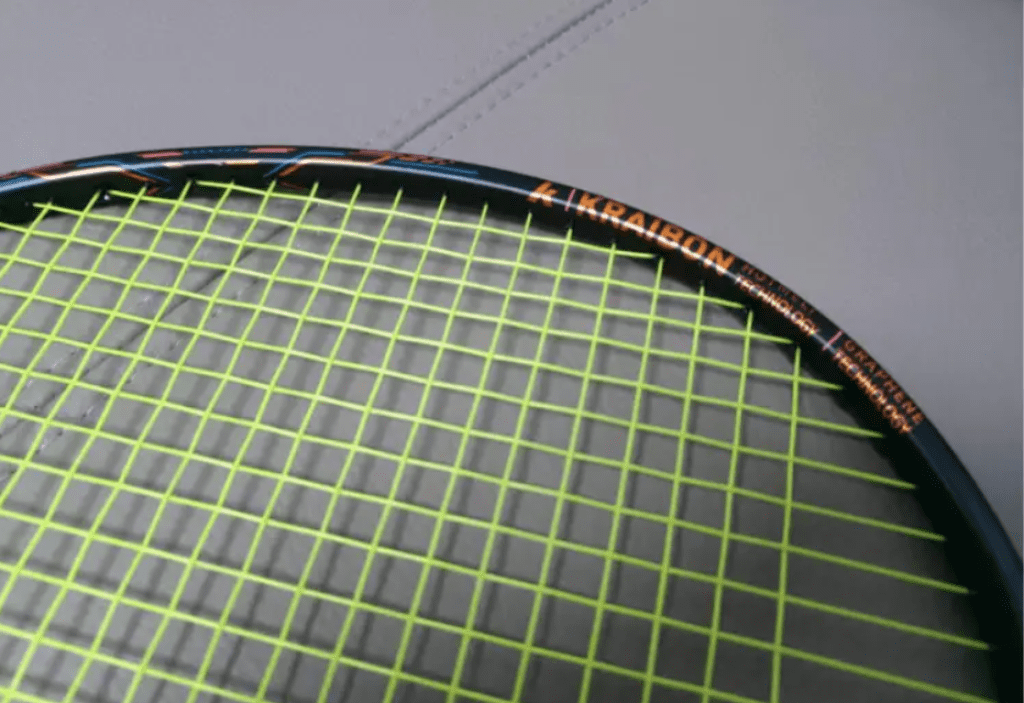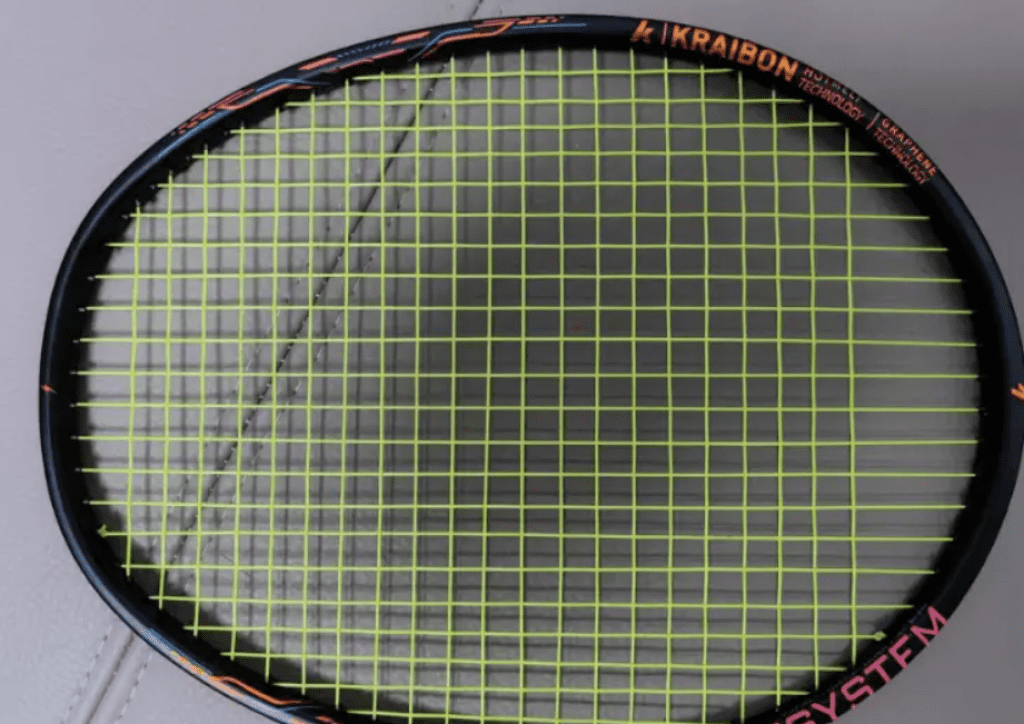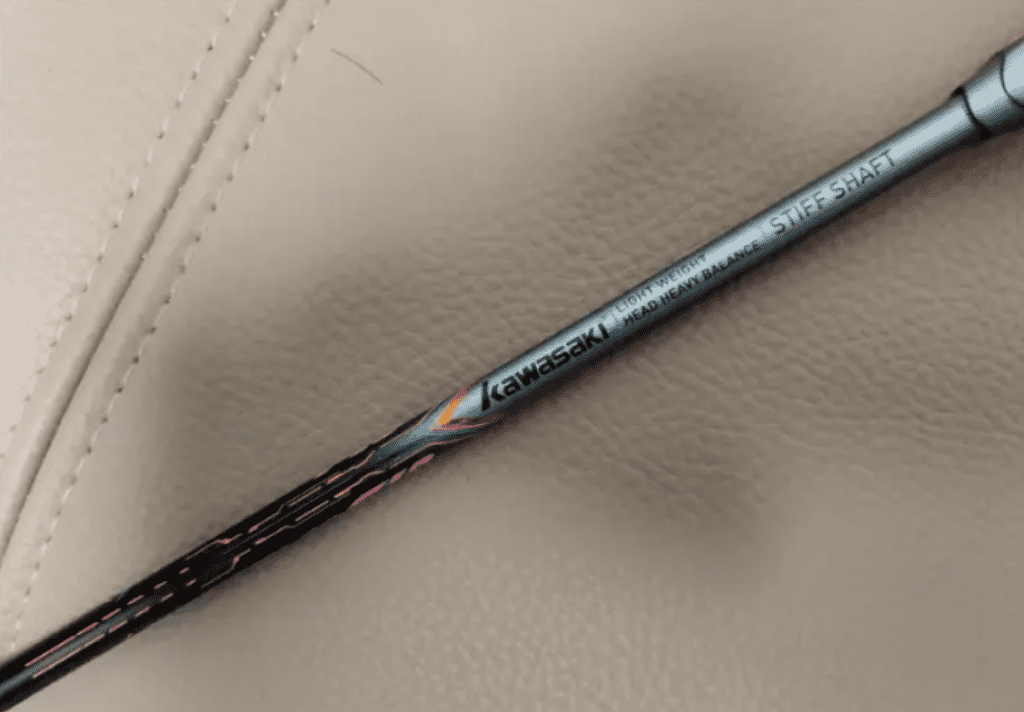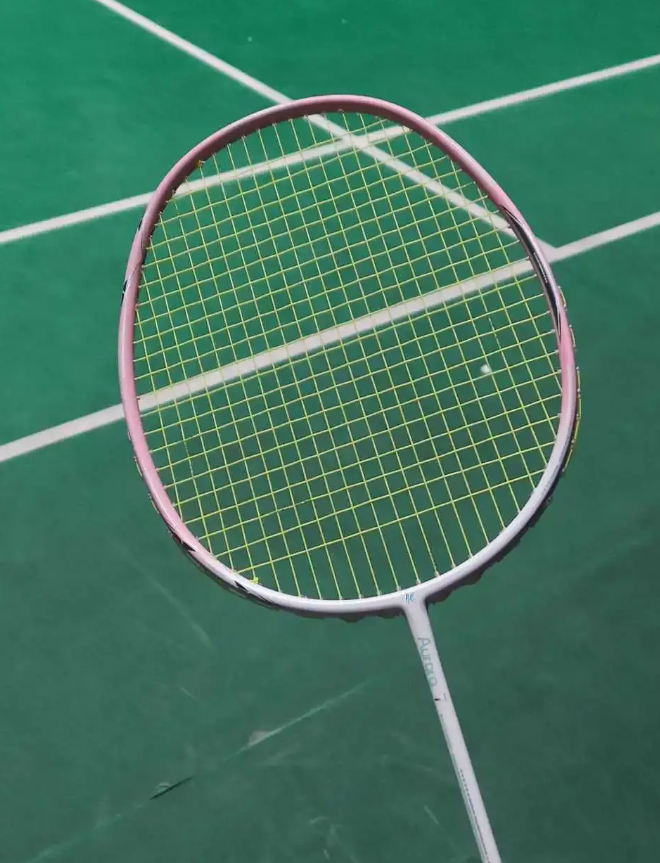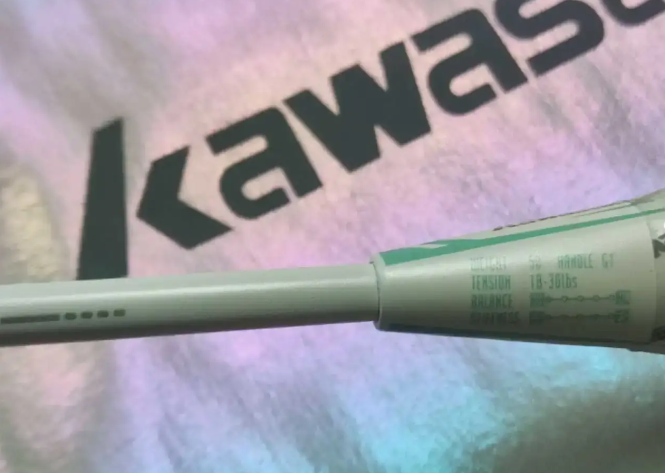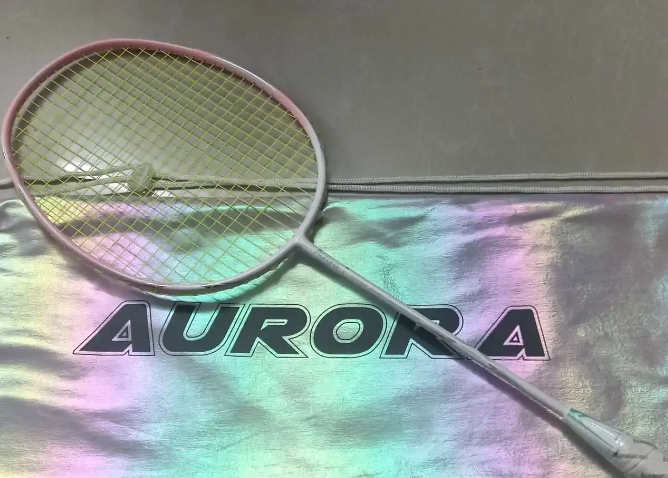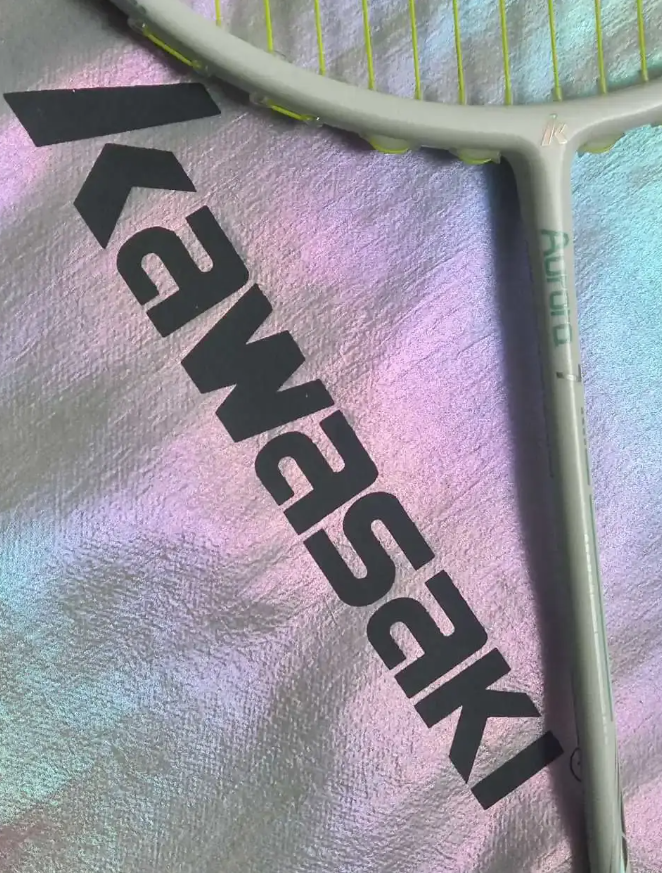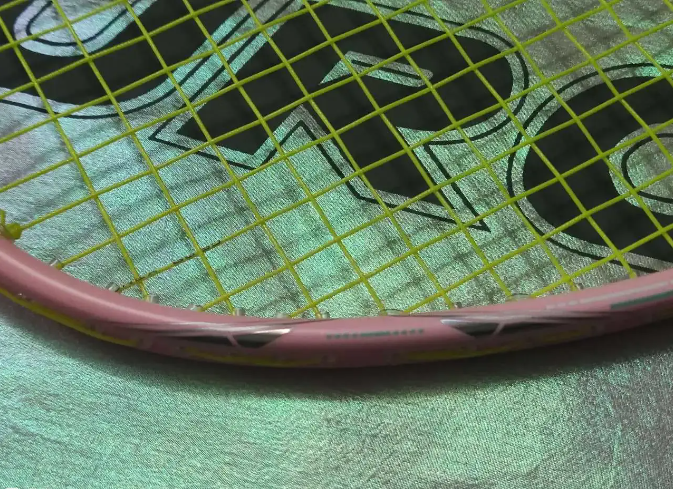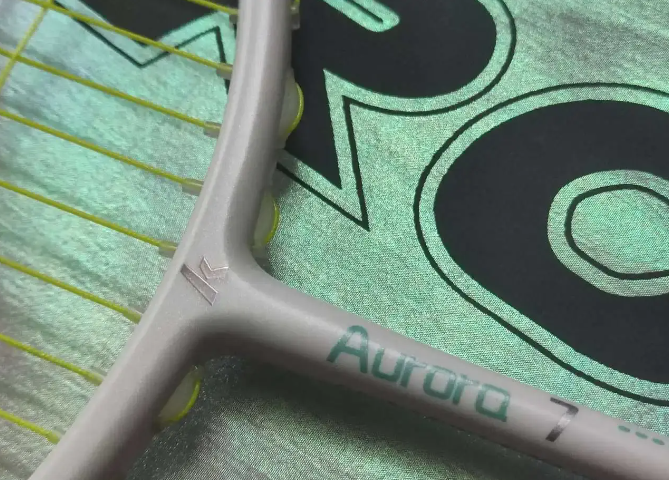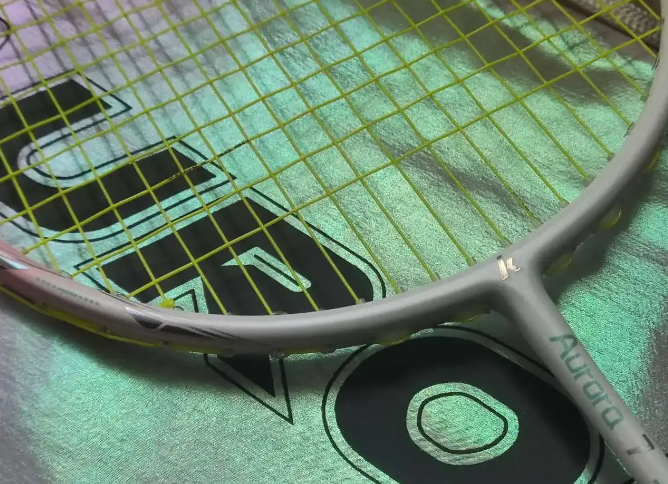As I continued my trial experience, I finally got my hands on a Kawasaki racket with real distinctiveness.
Do you suffer from “beginner’s racket face blindness”? I’ve been using a lot of mid-to-low-end rackets recently, and looking back at the non-high-end categories I’ve tried, they all seem to perform similarly—light and easy to drive. It doesn’t really matter which manufacturer they come from; the differences are minor. What they compete on are either looks, the amount of material packed into them, or the branding appeal that big names can effortlessly market.
But for manufacturers that focus on reliability, it’s not a matter of choosing between stunning visuals or creating a performance monster.

Specifications: 5U G6, with grip, total weight in use 90.14g, balance point 292mm, 6.8mm shaft, length 221mm, medium stiffness, aerodynamic frame, 76-hole string bed, 9-3 point string grooves, warranty up to 32lbs, strung at 25-27lbs using Viscounter V3 strings.
A deep blue night sky, with sparkling stars, and most of the sky illuminated by the vibrant colors of the aurora—this is indeed the vision that the 50S appearance conveys. The main body of the racket is composed of deep blue pearlescent paint and gray matte paint, with the pearlescent effect being particularly eye-catching, bling bling with a dazzling brilliance. The decorations mainly consist of new holographic stickers, used sparingly but matching the contours and visual lines of the 50S just right. Observing the changes in reflections from different angles is quite fascinating, much like admiring the unpredictable changes of the aurora.
Moreover, it retains the tradition of the Aurora series, which comes with a high-value racket cover, making the emotional value max out.
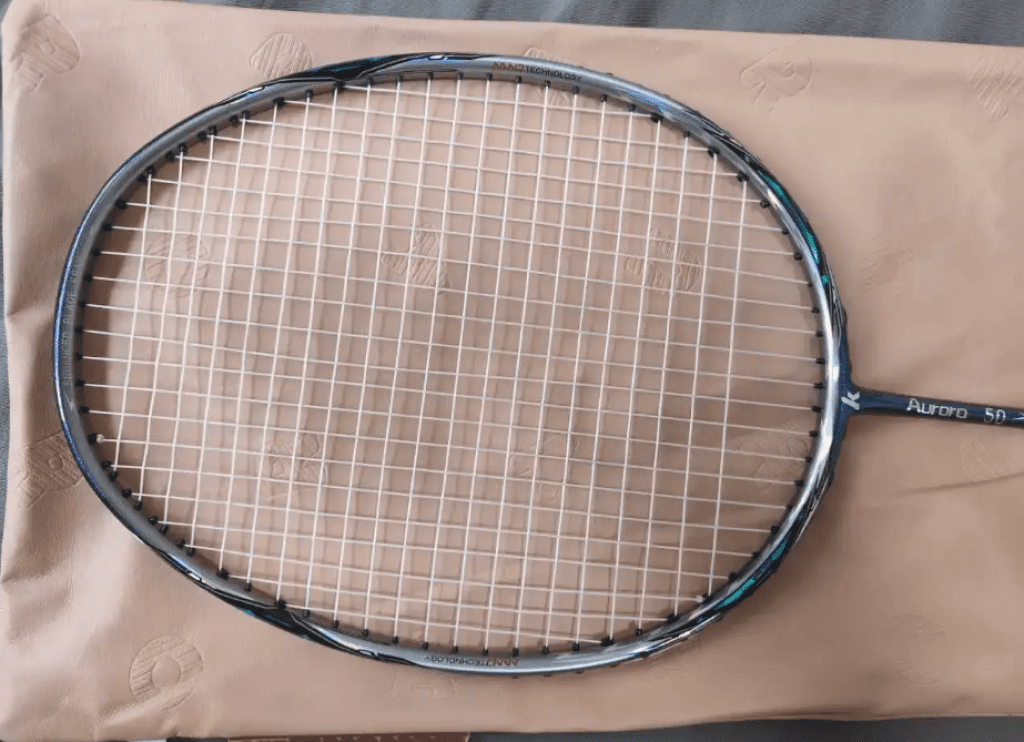
This is a product that inherits from its predecessor, the Aurora 7, but besides the visual upgrade, the 50S also received performance enhancements. In terms of materials, it uses a shaft made of Toray 40T carbon fiber, making it more elastic. In terms of specifications, a 4U version was added to meet the diverse needs of players. Structurally, the power cone cap and the slightly adjusted aerodynamic frame aim for faster and stronger performance. In fact, the replacement of the carbon fiber butt cap with the latest one also shows that Kawasaki is taking this upgraded product seriously.
I’m sure many of you are tired of hearing about racket “pro” features, but the 50S’s upgrades and naming seem much more subtle.

Even with the same 5U specifications, the 50S, after shedding the compromises made in the predecessor to accommodate users with insufficient strength, now offers a much more appealing hitting feel. The combination of the fish-mouth cone cap and the extended shaft still provides considerable drive, but the improved stiffness and abundant elasticity remove most of the cheapness from this drive. When attempting to add power to the shots, the speed, trajectory, and depth of the shuttle all form a good linear relationship with the power output to the racket face, making the racket feel more resilient. Although the 50S hasn’t lost its “sweet” nature, its deeper inner strength is enough to accompany its owner to higher levels, rather than reaching its limits too early and bowing out prematurely.

Mid- and front-court drives and net play are naturally the strengths of the 50S. There’s no extreme balance point, no soft power feedback, and the process from a quick backswing to hitting the shuttle is very smooth. It’s easier to take a more advanced grip point, and with quick wrist and forearm movements, you can easily execute net kills, flat drives, and other shots with precision, hitting your target every time.
As the hitting feel improves, my confidence in the 50S’s downward shots becomes even stronger. In active power play opportunities in the mid- and backcourt, it makes me more eager to speed up and add power to my attacks. Since the racket is highly forgiving and easy to generate power with, there’s no fear of failing to hit solidly and producing weak shots that the opponent can easily counter. This still isn’t a racket for heavy hitters, but the 50S undoubtedly uses its agility and elasticity to turn continuous downward pressure into a more effective scoring method, providing a satisfying attacking feel.

It’s not just the downward shots; the 50S’s directional control also surprised me. The stability of the racket face is outstanding for a 5U product, and it’s still an aerodynamic frame—how did they achieve that? It’s said that Kawasaki deliberately increased the thickness of the racket frame’s top, which undoubtedly involved a trade-off between swing speed and torsional resistance. For a 5U product, further increasing the swing speed is no longer a priority, and this adjustment’s rationale is unquestionable.
So, even with a light and highly elastic setup, baseline control and net play remain within the 50S’s comfort zone. There’s rarely a concern about hitting clears out of bounds, and various slicing, net drops, and net kills all have a lively feel. Occasionally, you might even discover the secret to precise power control and show off a deceptive shot, like a fake drop followed by a real push—a display of unpredictability.
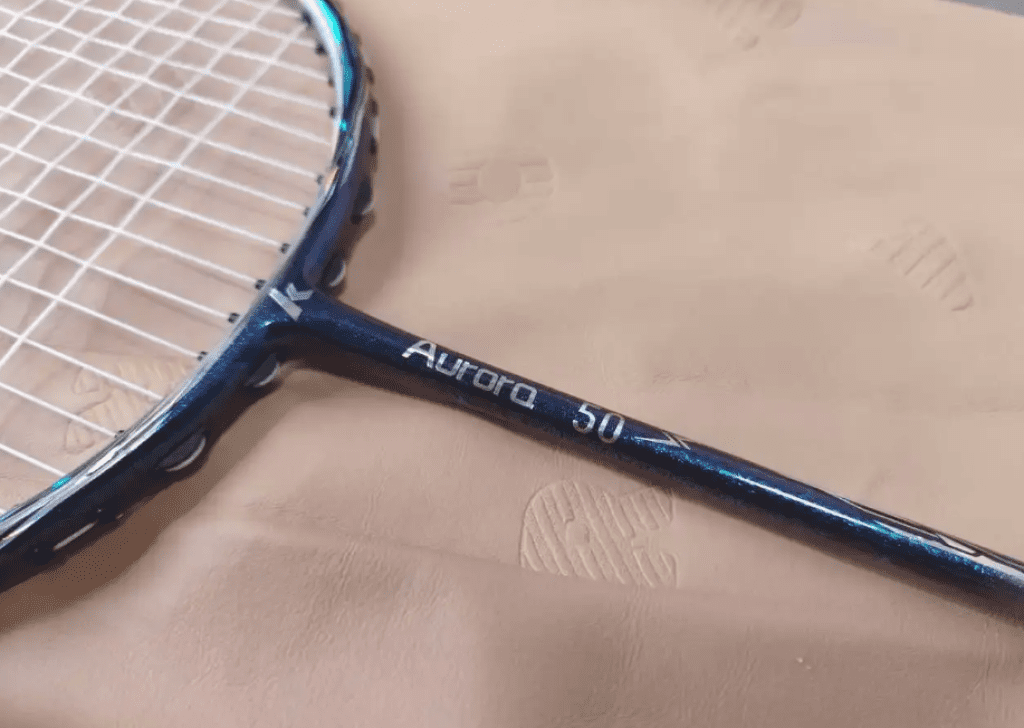
Even in handling defensive shots, the 50S is so effortless. As long as you make solid contact with the shuttle, backhand lifts to the baseline or lifts after receiving a smash can be done with ease. It’s all about respecting the defensive game’s internal challenges. Such performance allows you to fully relax and let go on the court, without fear of dragging down your teammates or being outplayed by your opponents. If I ever get the chance to visit Northern Europe and witness the polar lights, I’m sure I could also take the opportunity to clear my mind of all worries.
Kawasaki has used the right materials and a well-thought-out approach to fine-tune the Aurora 50S, making it a well-rounded racket. I can win, but I can also play without thinking about winning or losing—having fun is the confidence the 50S gives me in both its appearance and performance.












